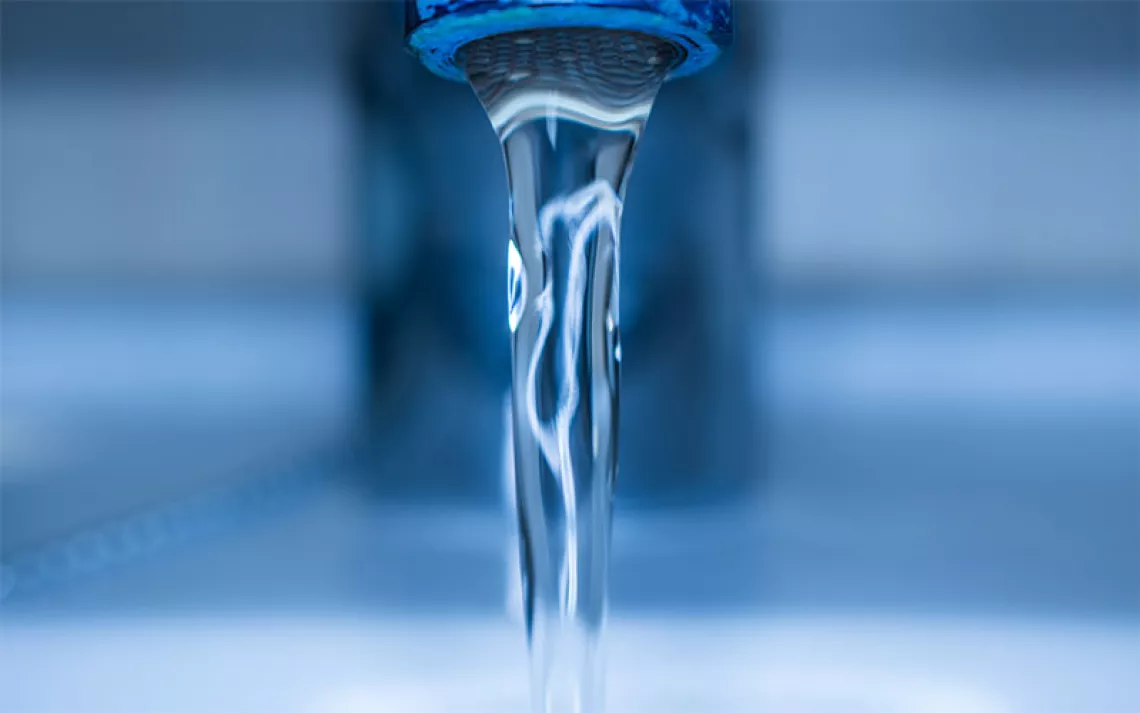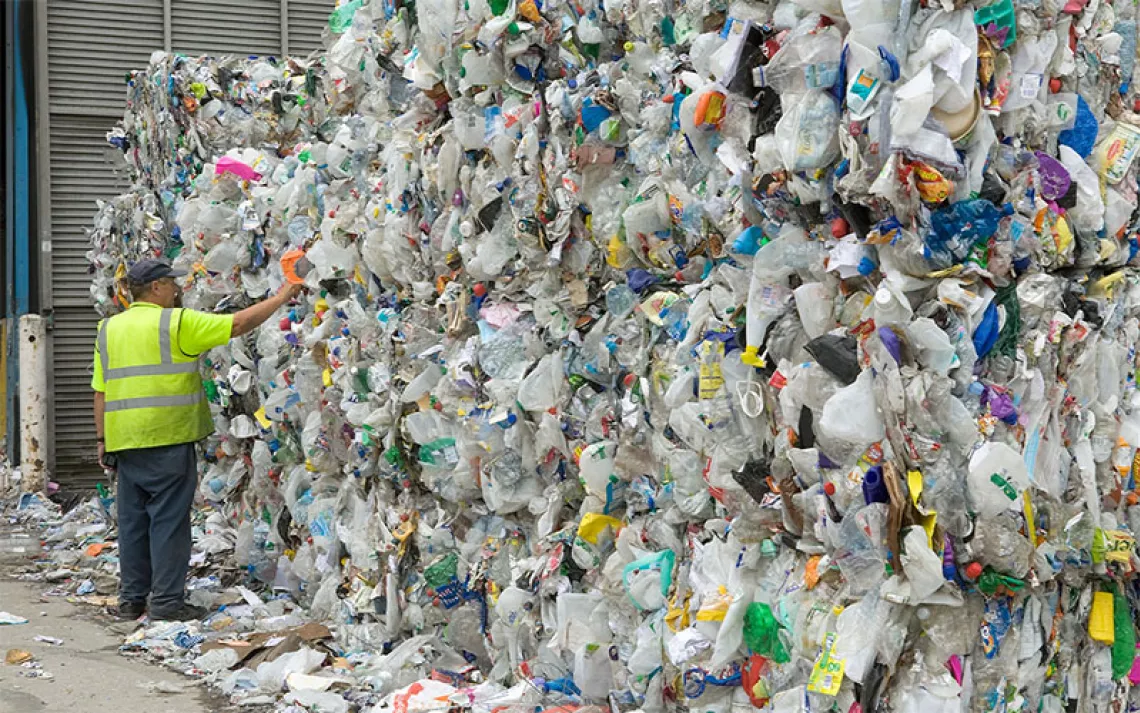PFAS Are Everywhere. We Need Systems Change to Fix That.
Here's what you need to know and how to avoid these toxic chemicals
Some of the most hazardous chemicals to human health and the environment are in just about everything we purchase and consume, whether it's personal-care products, food packaging, cookware, or clothes. Known as PFAS, per- and polyfluoroalkyl substances are commonly used to make surfaces nonstick and resistant to water and grease. PFAS, also known as forever chemicals, do not naturally degrade. They are found in the blood of 99 percent of Americans. And there's no way to remove them from our bodies.
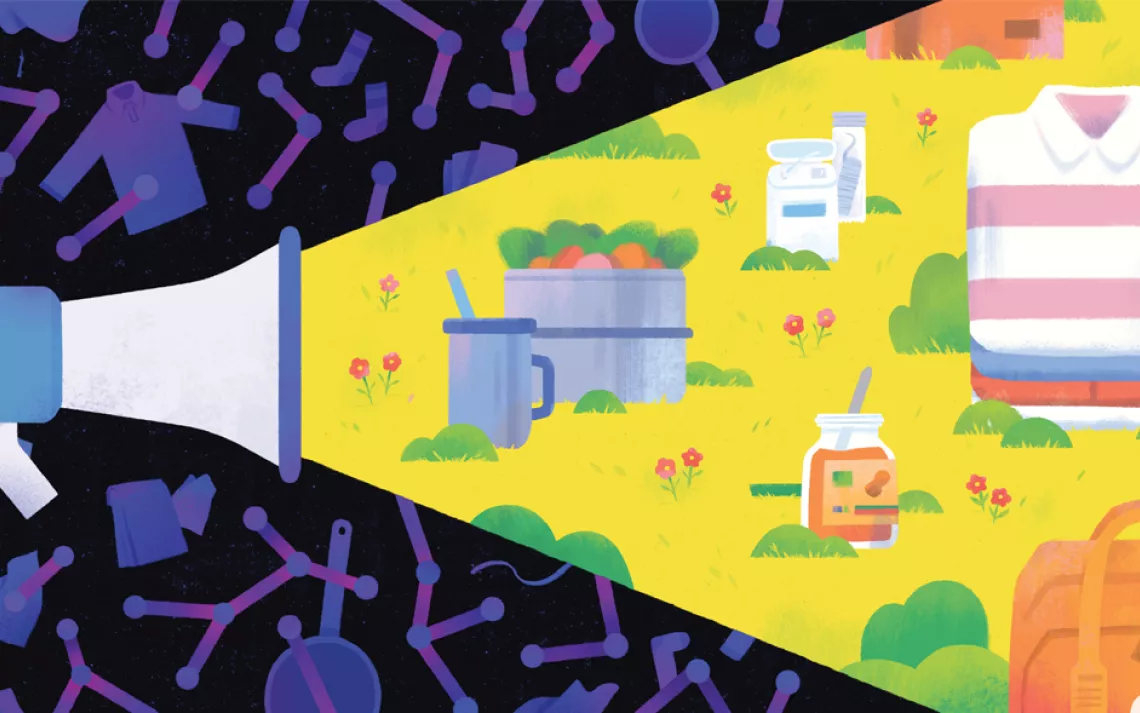
Exposure to PFAS such as the chemical perfluorooctanoic acid (PFOA) has been linked to a variety of health problems, from an increased risk of kidney and testicular cancers to cardiovascular disease, obesity, and diabetes. PFAS exposure may even increase the likelihood of COVID-19 infection (and more serious symptoms).
PFAS can migrate from everyday products to drinking water, and most water purifiers do not remove them. In a new study, researchers at Northeastern University identified more than 57,000 sites that are likely to be contaminated with PFAS, including water-treatment plants.
This year, the EPA confirmed that there is virtually no safe level of PFAS in drinking water. Even so, the federal government has still not established limits for PFAS in water, food, or consumer products, leaving states to set their own. Some organizations look to Denmark's PFAS threshold: no more than 20 parts per million in paper foodware.
Fortunately, there is momentum for change in the US. Some states have banned PFAS in products such as food packaging, cosmetics, textiles, and carpets. And thanks to a raft of new studies, we now know a lot more about what products are safer than others.
Clothes, Bedding, Car Seats, and Furniture
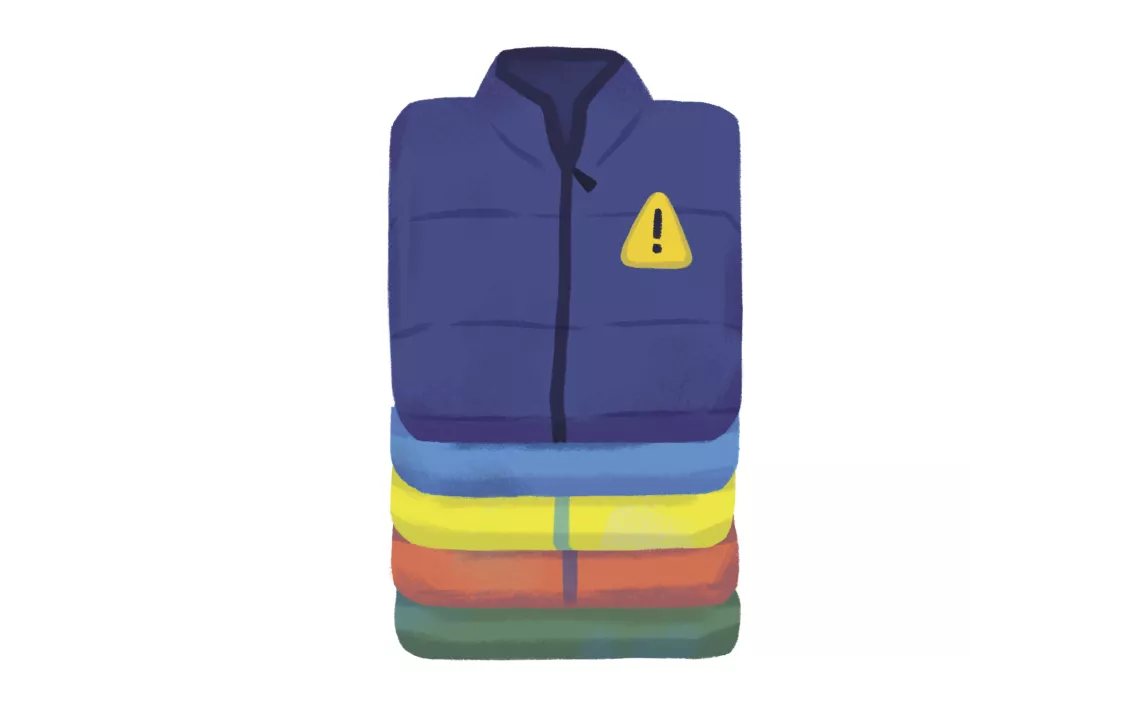
Waterproof products are typically the worst culprits when it comes to PFAS. Researchers for the nonprofit Silent Spring found the presence of PFAS in a variety of textile products, even ones labeled "green" or "nontoxic." Silent Spring found indications of PFAS in mattresses by Sealy and clothing from Gap, Old Navy, and Lands' End. Upholstery fabric from Crypton and Sunbrella had PFAS, as did menstrual underwear from Bambody and Thinx. Twenty-eight of 54 products had indications of PFAS above 100 ppm, and 13 products had indications of PFAS above 1,000 ppm.
In tests conducted by Mamavation, 15 out of 23 popular brands of bras showed indications of PFAS on the fabric next to the nipple areas. Breathable mesh fabric and synthetic fabrics like polyester and rayon were more likely to contain PFAS. Another study by the Ecology Center found indications of PFAS in car seats and strollers.
The good news is there are products that have shown no indications of PFAS, such as bras and children's clothes by Pact Organic and organic menstrual underwear by Aisle. Keen has done solid work to get PFAS out of its supply chain. And European companies like Fjällräven are leading the way in producing PFAS-free jackets, tents, and kids' backpacks.
Food
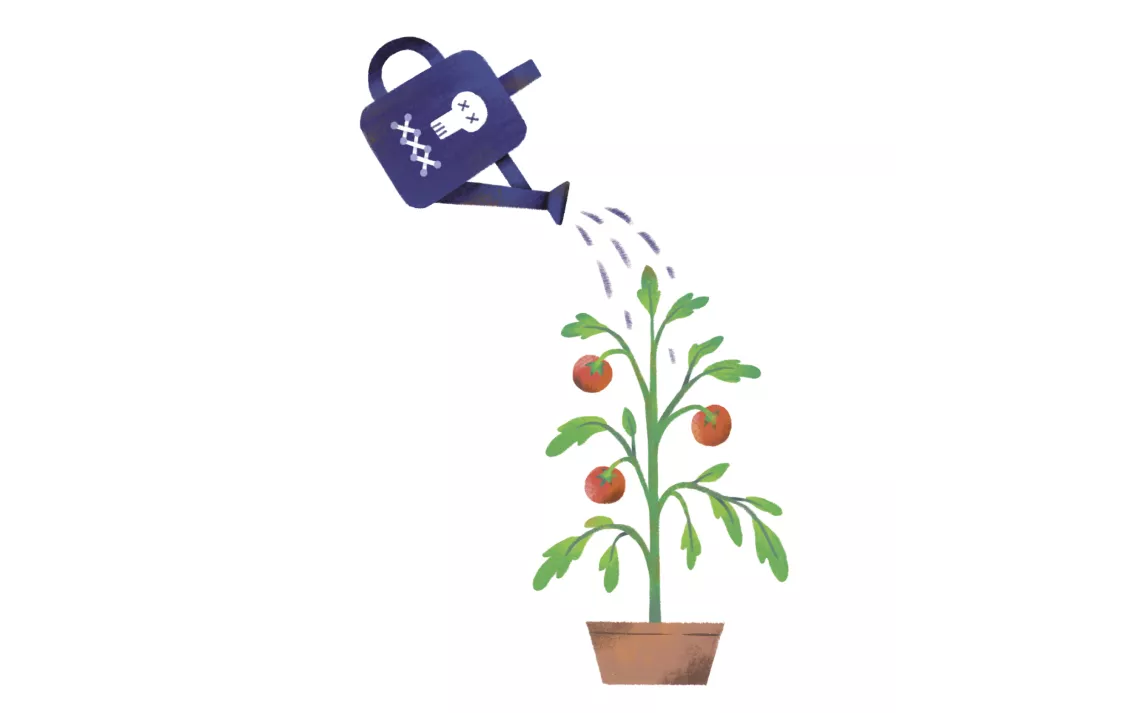
PFAS can also get into our food. The chemicals have been found in up to 20 million acres of US farmland, and they migrate into produce. Neither the EPA nor the USDA requires farms—even those with organic certification—to test for PFAS. And federal agencies haven't set a deadline to stop industrial wastewater full of PFAS from entering our water supply and contaminating the "sewage sludge" used for fertilizers (see sc.org/pfas-sludge). PFAS can also enter food from nonstick cookware and food-processing equipment.
PFAS have been found in food containers and packaging. Consumer Reports even found high levels of PFAS in foodware using paper labeled as being from "responsible sources," "EcoCraft," or "100% compostable." The fast-food chain Nathan's Famous served food in bags with 876 ppm of PFAS, the highest level of PFAS of any brands investigated.
But there are safer food products and foodware that have been found to have no indications of PFAS, such as Santa Cruz Organic Creamy Peanut Butter (which comes in glass). Some restaurants offer takeout foodware that they wash and reuse. There are apps for that! Try EatRepeater, Forever Ware, DeliverZero, or GreenToGo. If you need single-use foodware, use GreenScreen Certified compostable options.
Personal Care
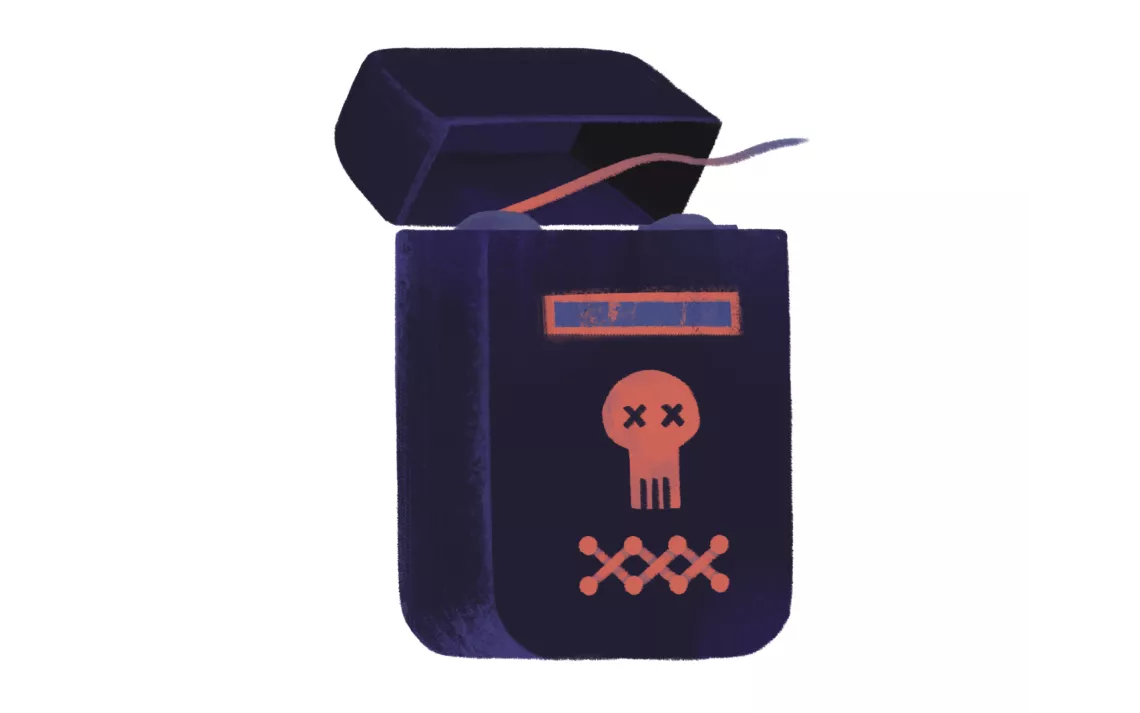
Some of the most common personal-care and hygiene products—even dental floss—contain PFAS. In 2021, Clearya and the Green Science Policy Institute found that 1,000 personal-care products from 120 brands contained at least one PFAS chemical. Another study found that two popular brands of floss had the highest levels of PFAS out of the 39 tested: Oral-B Glide (248,900 ppm) and Colgate Total Mint Waxed Dental Floss (91,400 ppm). In 2019, the Journal of Exposure Science and Environmental Epidemiology published a study on how women who used Oral-B Glide floss had higher levels of PFAS in their blood than women who didn't. Fortunately, some products tested showed no indications of PFAS, such as 100% Pure Bamboo Blur Tinted Moisturizer. As for floss, your best bet is to avoid extra-slick products. I like Flosspot Gold, a vegan, petroleum-free floss that comes in a refillable container.
What You Can Do
Petition the federal government
Sign the Toxic-Free Food Chemical Alliance petition asking the FDA to ban PFAS in food production, packaging, and manufacturing. And add your name to the Sierra Club's petition asking the EPA to stop manufacturers like 3M, DuPont, and Chemours from releasing PFAS into our air, water, and food, and make the companies pay to clean up PFAS.
Support state policies that ban PFAS and other harmful chemicals
Join Safer States and the Safer Chemicals, Healthy Families Coalition and other nonprofits to help reduce toxic chemical exposure.
Be a more informed consumer
Unlike other certifications and lists of PFAS-free products online, GreenScreen Certified products must be lab-tested to be free of all PFAS as well as phthalates, heavy metals, and some solvents. When it comes to products that claim to be "PFOS-free" or "PFOA-free," keep in mind that those are just two of the 12,000 PFAS chemicals in circulation, so products with these labels may not necessarily be free of all PFAS.
Learn more about PFAS-free products at sc.org/pfas-free-world.
 The Magazine of The Sierra Club
The Magazine of The Sierra Club

